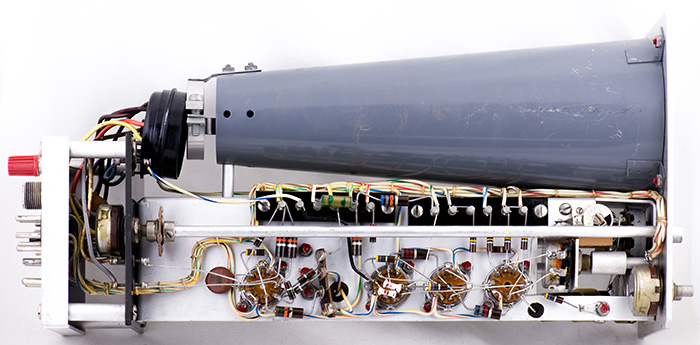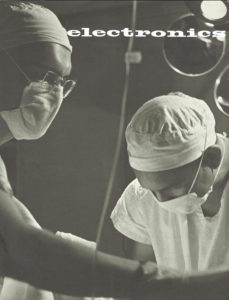In the early days of Tektronix the Directors talked about taking on special or custom work. They reasoned that a small company could be more efficient for this type of work. One such project was a 50 channel oscilloscope for Dr. Archie Tunturi at the University of Oregon medical school. Dr. Tunturi was studying electrical waves generated by the brain in response to different kinds of stimuli. He conducted his studies on anesthetized dogs but there were so many different kinds of stimuli that he needed a way to consolidate the responses. Dr. Tunturi met with Howard Vollum to discuss an oscilloscope that would display 50 waveforms simultaneously which could be photographed on a single negative. The result is the instrument you see here. This development, along with a few others, convinced the Directors that one-of-a-kind custom products would never be financially viable. All that remains of this incredible oscilloscope are these photos, this story, and one partial indicator unit. We believe this oscilloscope was developed somewhere around 1952. It must have been impressive to see in action, weighed a ton, and heated the surrounding rooms!
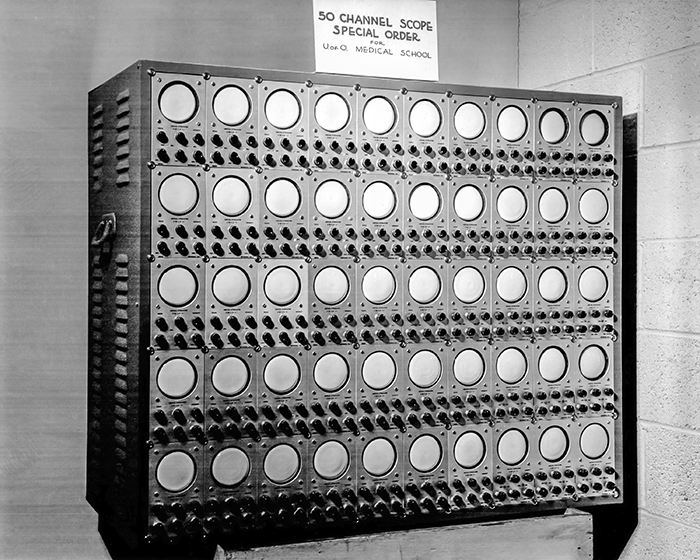
This photo of Dr. Archie Tunturi with his lab setup including the 50 channel oscilloscope is Courtesy of OHSU Historical Collections & Archives.

The November 19, 1962 TekTalk featured Electronics and Medicine. This extract describes the use of the 50 channel oscilloscope at the University of Oregon Medical School.
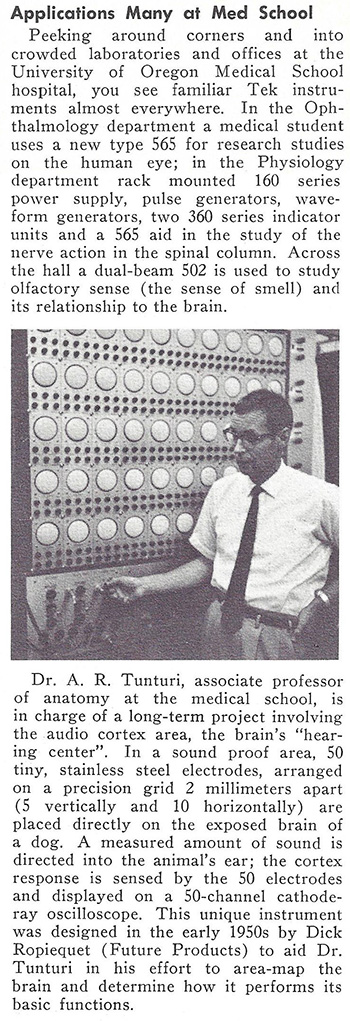
The complete Electronics and Medicine issue can be viewed by clicking on the image to view the PDF.
This photo of Dwight Loomis is from a death notice in the April 17, 1956 issue of TekTalk. It was taken previously in front of the 50 channel oscilloscope sometime after July 1955.
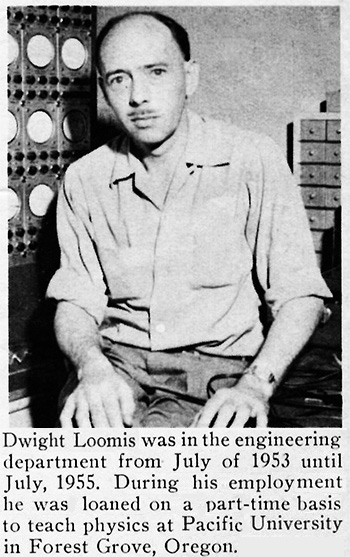
This July 28, 1960 TekTalk features the return of the first 511 oscilloscope to Tektronix and the side of the 50 channel oscilloscope is visible in the photo.
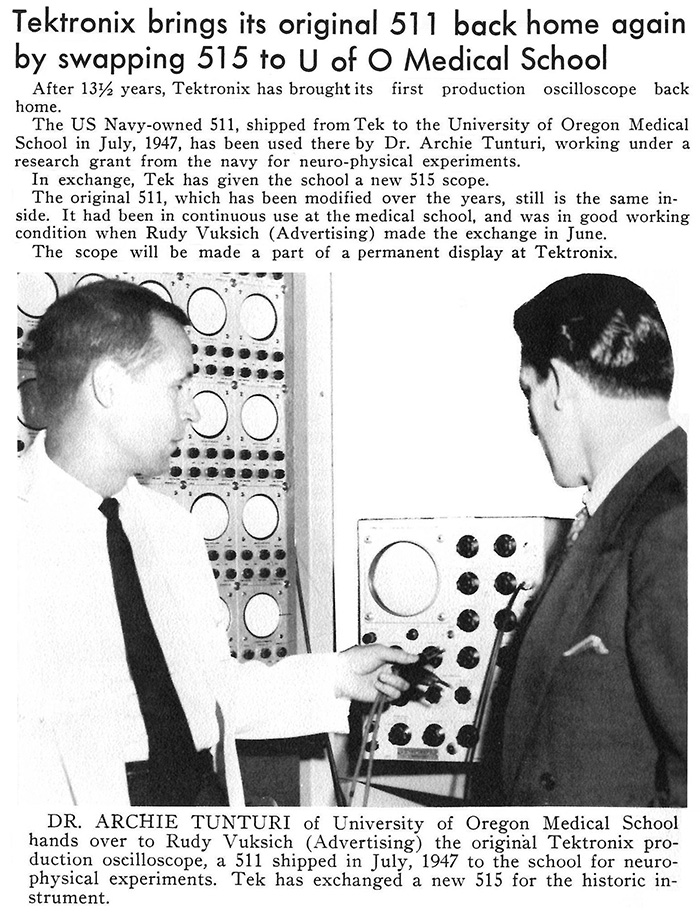
The museum is lucky enough to have one of the indicator units. The serial number 150 seems a bit high.
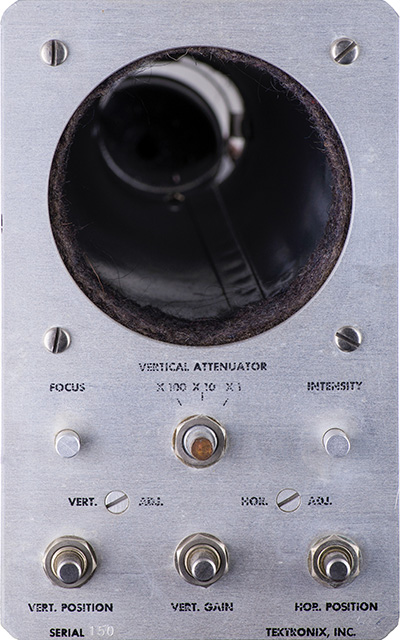
The wiring must have been massive behind the display. A UHF connector carries the vertical signal and connects directly to the attenuator switch. The red banana jack connects to intensity and is like used for blanking. The octal plug provides the various CRT element voltages. The five pin plug provides the DC and tube filament voltages. The 4 pin plug provides the horizontal deflection signals.
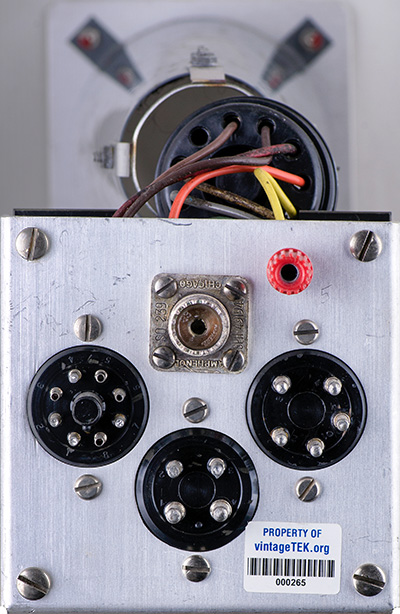
The right side shows typical Tektronix construction techniques.
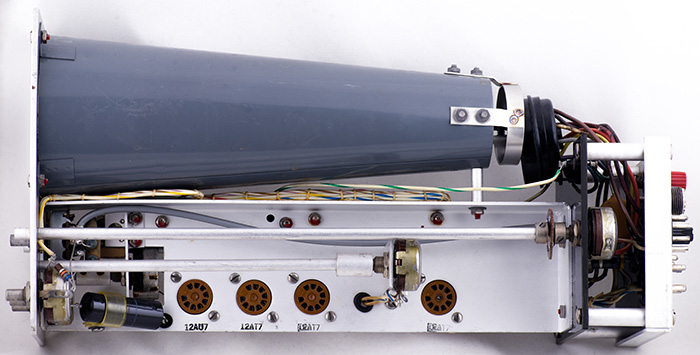
The terminal blocks are somewhat unique in that they are just a single row of terminals for connecting the various wires to the various components. Conventional point to point wiring techniques are used for the tube circuitry.
